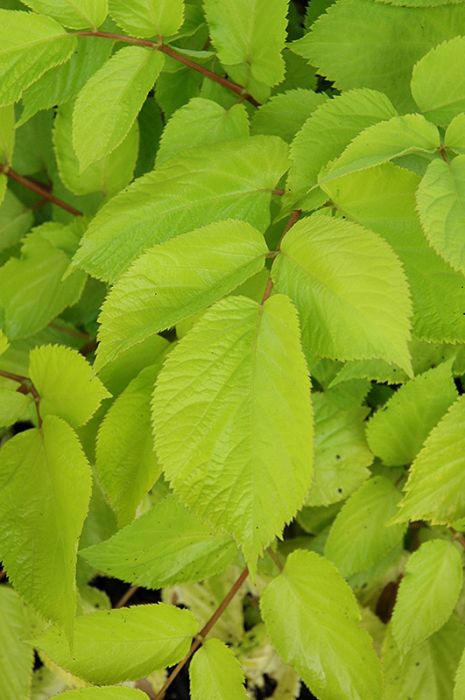Top Ten Perennials – Shade and Sun
Gary's Top Ten Perennials for both Sun and Shade!



Out of stock
Coming soon, still growingRapid grower with large, impressive chartreuse to yellow compound leaves and contrasting reddish brown stems. Honeybee attracting white flowers in mid to late summer and purplish black berries provide extra interest. Brightest foliage color with some sun.
Discover an unparalleled selection of perennials at Gertens! With the largest variety in Minnesota, we offer endless options of colorful perennials, natives, and pollinator plants to beautify your garden year after year. From vibrant flowers to lush foliage, our perennials are perfect for adding beauty and charm to your outdoor space. Visit Gertens today and see why we're known as Minnesota's Destination Garden Center!
Sun King Aralia | Aralia cordata 'Sun King'
Height: 3 feet
Spread: 3 feet
Sunlight: full sun to full shade
Hardiness Zone: 3a
Other Names: Golden Japanese Spikenard
Brand: Gertens
Description:
Large golden compound leaves and a rounded, tidy habit makes this a wonderful woodland accent plant; white flower clusters are airy and visually pleasing; foliage is more yellow-gold in bright sun; deep purple-black berries are not edible
Ornamental Features
Sun King Aralia features airy racemes of white star-shaped flowers at the ends of the stems from mid to late summer. Its large serrated pointy compound leaves emerge lemon yellow in spring, turning gold in color throughout the season. It produces deep purple berries from early to late fall.
Landscape Attributes
Sun King Aralia is an herbaceous perennial with a ground-hugging habit of growth. Its wonderfully bold, coarse texture can be very effective in a balanced garden composition.
This plant will require occasional maintenance and upkeep, and is best cut back to the ground in late winter before active growth resumes. It is a good choice for attracting birds and bees to your yard. Gardeners should be aware of the following characteristic(s) that may warrant special consideration;
Sun King Aralia is recommended for the following landscape applications;
Planting & Growing
Sun King Aralia will grow to be about 3 feet tall at maturity, with a spread of 3 feet. It tends to be leggy, with a typical clearance of 3 feet from the ground, and should be underplanted with lower-growing perennials. It grows at a medium rate, and under ideal conditions can be expected to live for approximately 20 years. As an herbaceous perennial, this plant will usually die back to the crown each winter, and will regrow from the base each spring. Be careful not to disturb the crown in late winter when it may not be readily seen!
This plant performs well in both full sun and full shade. It prefers to grow in average to moist conditions, and shouldn't be allowed to dry out. It is not particular as to soil type or pH. It is highly tolerant of urban pollution and will even thrive in inner city environments. This is a selected variety of a species not originally from North America.
| Common Family Name | Golden Aralia |
|---|---|
| Gerten Grown Plants | Gerten Grown Plants |
| Sun Preference | Full-Sun, No-Sun |
| Bloom Time | August, September |
| Mature Spread (Range) | 24" - 36" |
| Mature Height (Range) | 25" - 36" |
| USDA Hardiness Zone | 3, 4, 5, 6, 7, 8 |